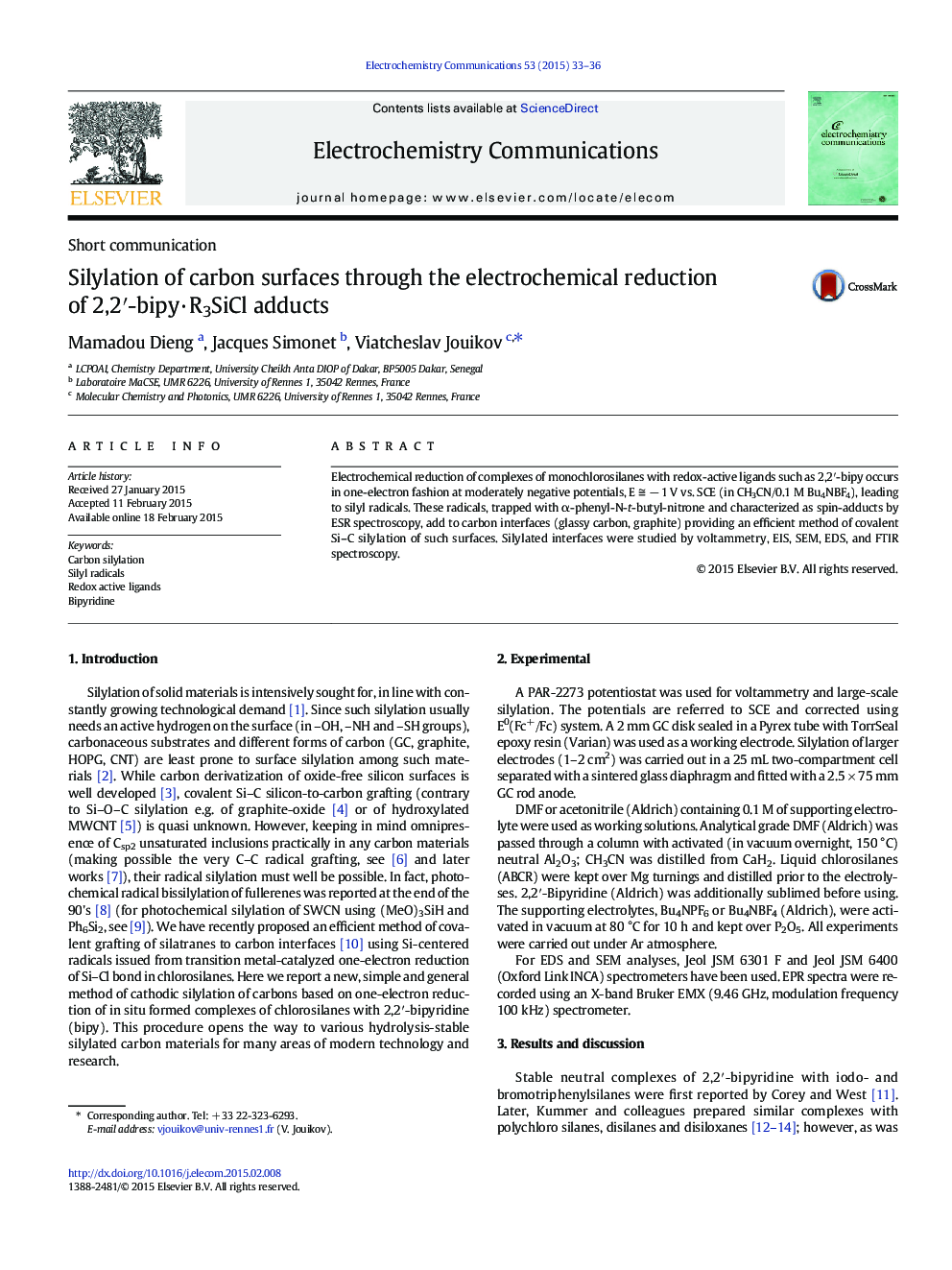| Article ID | Journal | Published Year | Pages | File Type |
|---|---|---|---|---|
| 178946 | Electrochemistry Communications | 2015 | 4 Pages |
•2,2′-Bipyridine forms adducts with monochlorosilanes in solution.•Anion radicals of bipy-monochlorosilane adducts are formed via one-electron reduction.•Cleavage of anion radicals of bipy-monochlorosilane results in silyl radicals.•Efficient addition of triorganosilyl radicals to carbon surface
Electrochemical reduction of complexes of monochlorosilanes with redox-active ligands such as 2,2′-bipy occurs in one-electron fashion at moderately negative potentials, E ≅ − 1 V vs. SCE (in CH3CN/0.1 M Bu4NBF4), leading to silyl radicals. These radicals, trapped with α-phenyl-N-t-butyl-nitrone and characterized as spin-adducts by ESR spectroscopy, add to carbon interfaces (glassy carbon, graphite) providing an efficient method of covalent Si–C silylation of such surfaces. Silylated interfaces were studied by voltammetry, EIS, SEM, EDS, and FTIR spectroscopy.
Graphical abstractFigure optionsDownload full-size imageDownload as PowerPoint slide
